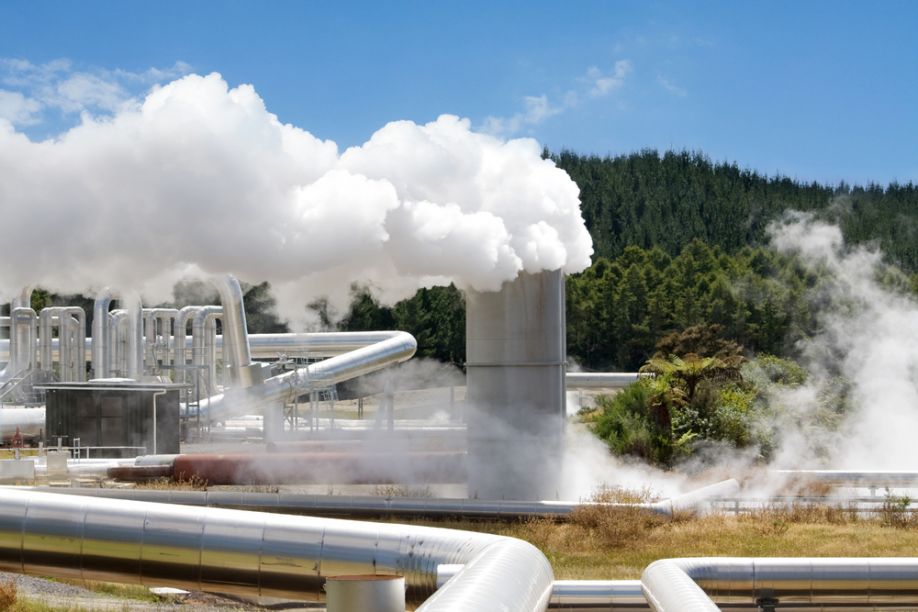Why Does the Seafood Industry Want to Use Geothermal Energy?

Environmentalists give aquaculture a bad rap for its high energy absorption and adverse effects on fish health. Fish farmers are targeting negative ecological impacts by sourcing energy from geothermal sources. Geothermal power decreases operation costs, increases resource accessibility and protects aquatic species’ health.
The seafood production sector also uses renewable energy sources to meet green energy initiatives. Some countries are holding companies responsible for their waste and fining top polluters. Fisheries can adopt geothermal energy systems to support global environmental sustainability goals.
Current Geothermal Production Efforts
The United Nations (UN) established the Paris Agreement, which sets sustainability regulations for 195 countries, in 2015. It works to reduce global emissions and Earth’s temperature by 2 °C on average.
Fisheries can support sustainability goals by utilizing geothermal energy. Geothermal plants emit much less carbon dioxide than fossil fuel plants during energy generation and provide consistent, reliable power.
Renewable energy sources also help countries meet their energy sectors’ decarbonization goals. America alone produces about 1,447 million tons of electricity emissions annually.
Geothermal-Powered Aquaculture in Iceland
Iceland’s seafood sector uses significant quantities of geothermal energy. In fact, the country receives over 27% of its electricity supply from geothermal sources. Iceland also has an abundance of fish farms because of its high-quality freshwater.
Fisheries use the resource to maintain farming conditions, power packaging facilities and support transportation processes. Iceland’s fish farmers rely on the temperature differentiation of geothermal waters to create sufficient growth environments. Initially, farmers heated seawater by combining it with 20 °C to 50 °C geothermal water. About 20 fisheries use the renewable resource to grow trout, salmon and tilapia.
The country uses a closed-loop system, relying on wells. Heat exchangers extract heat from the fluid for energy production and return excess resources to the aquifer.
Iceland’s largest fish farming plant, Samherji, uses geothermal power to grow salmon and arctic char. The company placed its Islandslax farm in a geothermal region with naturally stable water temperatures. Operators utilize about 240 liters per second of geothermal water from wells. They pump nearly one-third of the water up, and gravity surfaces the remaining water naturally.
Operators use heat exchangers to warm a portion of freshwater at the farm. Freshwater helps to oxygenate water because geothermal outputs contain lower oxygen levels.
Geothermal-Powered Aquaculture in China
China produces the most fish globally using geothermal power. The country has over 200 aquaculture farms, and most utilize these resources. Farmers in China also use geothermal energy to heat aquatic habitats.
The country also relies on geothermal energy to heat and cool its industrial facilities. Using renewables to support packaging plants can further decrease aquaculture emissions and operation costs. The industry relies on geothermal energy to enhance national sustainability.
Nearly 56.8% of the country’s power supply comes from coal. The energy source releases significant quantities of greenhouse gasses into the environment.
Enhancing Aquaculture’s Sustainability
Geothermal power is significantly more sustainable than fossil fuels, helping fisheries meet eco-consumer demands. Farmers can increase their sales by shrinking their products’ carbon footprints. They may also improve aquatic conditions by reducing greenhouse gas emissions.
Fish farms that rely on fossil fuels decrease local air quality. Farmers’ long-term exposures to emissions can harm their lung health. Over time, individuals’ risk of asthma, lung cancer and other respiratory diseases increases.
Improving Aquaculture’s Affordability
Geothermal energy is less expensive than coal and other fossil fuels. It can significantly increase the cost-effectiveness of aquaculture. Operators that power heat exchange pumps with geothermal energy eliminate related costs.
Aquaculture farmers can also reduce their packaging plant costs by heating and cooling the facility with geothermal power. They may additionally increase their financial stability by reducing product losses.
Increasing Fish’s Survival Rates
Aquaculture farmers can rely on geothermal water to minimize disease rates. Maintaining consistent aquatic environments limits stress on fish. Temperature fluctuations can cause biological changes, which reduce a marine species’ immune system efficiency.
Warm water can also naturally treat aquatic diseases. Researchers in Colorado explored the relationship between water temperatures and catfish health. They found rising river water to 32 °C can prevent catfish from developing “ick.”
Overheating water can also harm marine species. High temperatures create a sufficient growth environment for algae, and algal blooms can deplete oxygen levels and create uninhabitable regions. Algae is less likely to take over marine habitats when geothermal energy controls the water temperatures.
Helping Fish Grow Faster
Geothermal energy improves fishes’ growth rates. Different marine species require unique habitat conditions to grow in. Geothermal heat can support warm-water fish like trout, catfish, bass, tilapia and more.
High water temperatures create a comfortable environment where fish can meet their full growth potential. Geothermal energy also helps northern regions raise tropical fish, reducing transportation emissions. Fish that grow faster in controlled environments use fewer resources and minimize production costs.
Can the American Seafood Industry Use Geothermal Energy?
Aquaculture farmers in Idaho can potentially maintain their farms with geothermal power. Idaho has one of America’s largest geothermal capacities. Some farmers are catching on to the renewable energy trend and using it to grow catfish, tilapia and alligators.
California also has a high geothermal capacity. Aquaculture farmers can reduce the ecological impact of seafood production and help California meet its ambitious sustainability goal using renewables. They may additionally heat their packaging facilities and operation buildings with geothermal energy to minimize emissions.
People can also improve aquaculture sustainability by using geothermal energy to produce fish food. Growing algae, kelp and duckweed in controlled environments may limit adverse ecological and economic effects. Aquaculture resources generally contribute to a product’s carbon footprint.
Geothermal Energy in Seafood Production
Farmers can appeal to eco-consumer demands and increase sales when using renewable energy throughout their production processes. Producing feed, growing fish and powering packaging facilities in this manner may help society meet the UN’s global sustainability goal.
Comments (0)
This post does not have any comments. Be the first to leave a comment below.
Featured Product

